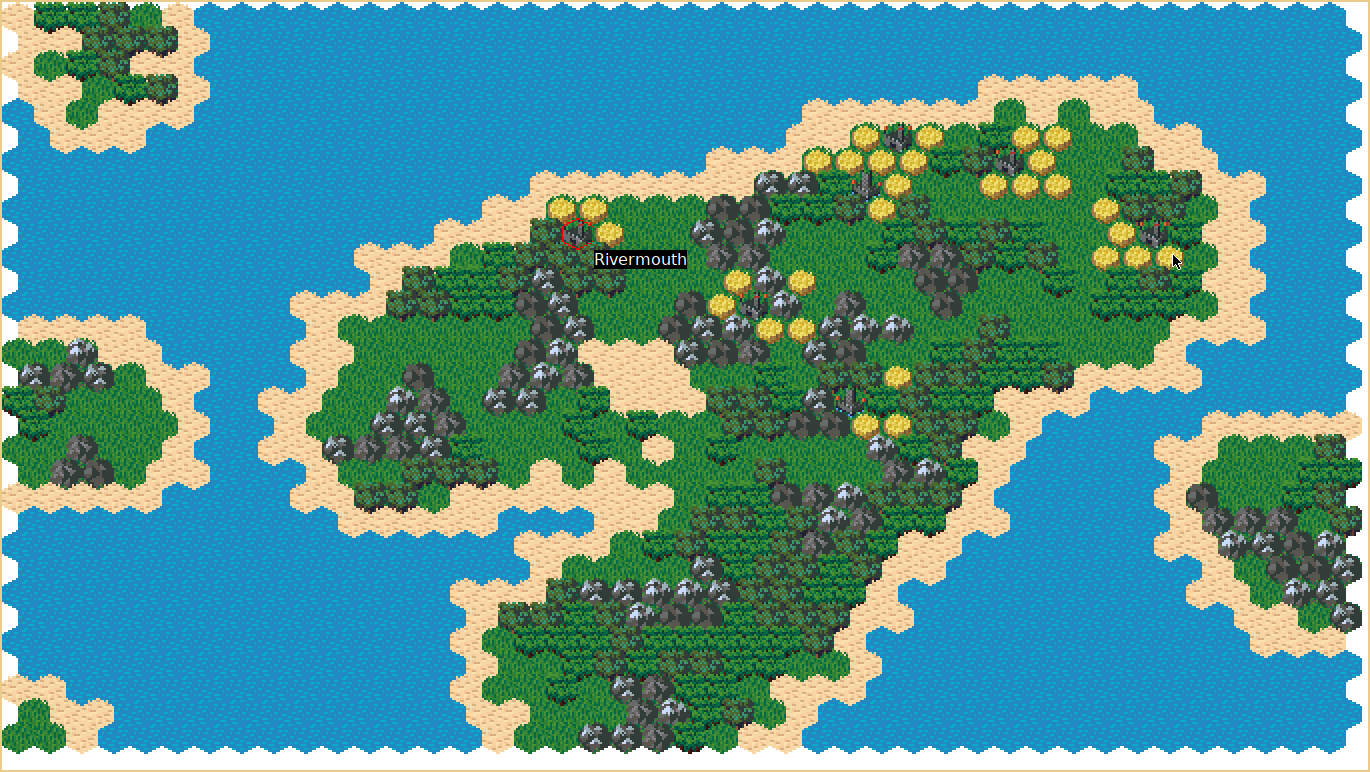Island Generation with Typed Racket
Last year I wrote a small procedural island generator in Racket called procsland. I know, the name sucks. I'm not very good at names. Aside from the name, though, I took a good look at the code this week and I realised I'm not very good at that either.
The generator was really a cellular automaton with hexagonal cells. Each cell had 6 neighbours. If a cell with water is surrounded by too little or a too much land, it turned into land. Pretty straightforward stuff, aside from a bit of hexagonal grid math. The trouble is, I didn't really adopt a very functional style for the code. I used a straight list to represent the map, but that was about it. Lots of list-refs and lots of awkward iteration. For some reason, a bunch of double quoted values popped up in the code (''land instead of 'land) so there were snippets like this one:
(last (list-ref
tile-list
(+
(+ q (car dir))
(* (+ r (last dir)) w))))
devised as a last ditch effort against myself. I still have leftover trauma from that. Anyway, you get the point.
I decided to rewrite it all. First, I ditched the list in favor of a 2D array. That made more sense considering all those list-refs that I feel are necessary. And then, as per the docs, Typed Racket popped up as an option. While I am familiar with it, I've never really used it. This was an opportunity to learn.
It felt a lot cleaner this time around. math/array provides a lot of useful tools that fit the job. The drawing code naturally moved to graphics.rkt, which I should've done sooner. The end result is a 60 line file for the cellular automata code and another 60 line file for the graphics code. main.rkt remained largely the same.
One issue that I ran into was (I think) a bug in typed/racket/gui. For some reason, before I moved the drawing code, running map.rkt, a file with around 5 definitions (and no user-defined macros or top-level function application) took too much memory. Switching to typed/racket/gui/base didn't help. Splitting the code did. After that, both map.rkt and graphics.rkt ran quickly and used a lot less memory. At a high level, it was probably some weird interaction between my code and stuff provided by typed/racket/gui. It will take a bit more testing to pinpoint the exact issue.

In the process, I completely forgot that I was using hexagons instead of squares, so the cellular automaton is actually a regular square-based one, but the end result might look a bit better anyway. After 15 steps, all the land masses seem well-defined, although they might actually be peninsulas and not islands. Po-tay-to po-tah-to.